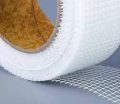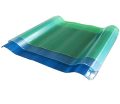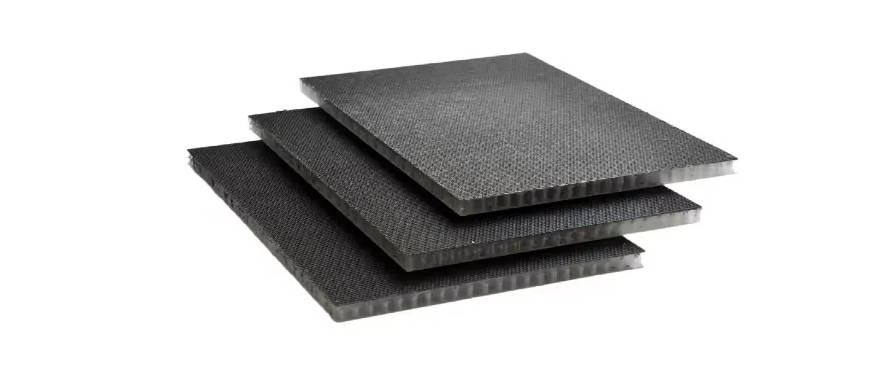
In the realm of construction, fiberglass has emerged as a material revered for its robustness and versatility, particularly in creating exceptional outdoor living spaces. This trend has notably escalated the popularity of fiberglass decking and roofs, transforming them into a coveted choice for homeowners and builders alike. The appeal of fiberglass lies in its remarkable ability to withstand the elements while maintaining its aesthetic elegance, making it an ideal candidate for enhancing the beauty and functionality of outdoor areas. Among its most celebrated traits are its extraordinary durability and minimal maintenance demands, attributes that significantly reduce the long-term upkeep challenges typically associated with outdoor constructions. Opting for fiberglass decking and roofs not only elevates the visual allure of a property but also offers a practical, long-lasting solution for those seeking to merge style with substance in their outdoor living spaces. Fiberglass decks and roofs provide durable, eco-friendly, weatherproof surfaces with corrosion resistance and a lifespan of over 30 years.
Types of Fiberglass Applications for Outdoor Spaces
The usage of fiberglass in outdoor spaces has expanded significantly over the years, with fiberglass decks and roofs standing out as the prime examples. This material’s flexible nature allows for a range of applications, each with its own set of advantages for enhancing outdoor living. One such application is the fibreglass container pond, which offers a durable, customizable, and low-maintenance option for creating beautiful water features in gardens or patios. This versatility makes fiberglass an ideal choice for a variety of outdoor projects, from structural elements to decorative features, all while ensuring long-lasting performance.
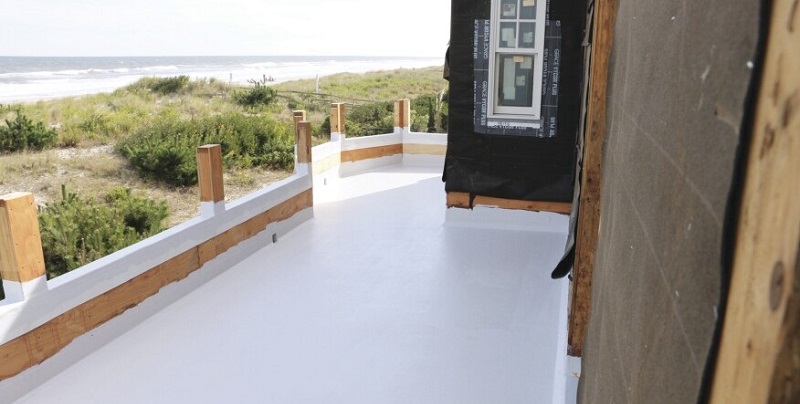
Fiberglass Roll Roof Decking
Fiberglass roll roof decking is a seamless, flexible mat that is easy to install over new or existing decks. Here are key points to understand:
- Weather Resistance: Its impermeability to water and resilience to weather elements make it a top choice for protection.
- Ease of Installation: The rolls can be applied over various surfaces, adapting to complex shapes and designs of decks.
- Energy Efficiency: The material reflects sunlight, aiding in cooler deck surfaces and reduced heat transfer.
- Longevity: Fiberglass roll decking resists rot, rust, and corrosion, leading to an extended lifespan.
- Low Maintenance: It requires minimal upkeep, with no need for frequent resealing or repainting.
- Aesthetic Versatility: It can be finished in a variety of colors and textures to complement any design.
- Structural Integrity: This decking reinforces the existing structure, offering additional strength.
- Cost-Effectiveness: Over time, the durability and low maintenance result in a cost-efficient solution.
Structural Advantages of Using 4 Inch Fiberglass Angle Products
Heavy Duty Fiberglass Roof Panels
Another prominent application is the use of heavy-duty fiberglass roof panels. Their robustness is unparalleled, encapsulating multiple benefits:
- High Load Capacity: These panels can support significant weight, crucial for areas with heavy snow or rain.
- Resistance to Elements: They withstand harsh UV rays, extreme temperatures, and severe weather conditions.
- Durability: The panels are known to last for decades without substantial degradation.
- Versatility in Climates: Regardless of the climate, from freezing cold to scorching heat, these panels maintain their integrity.
- Fire Resistance: Fiberglass panels offer a degree of fire resistance, enhancing overall safety.
- Translucency Options: They can be designed to allow natural light penetration, which can help in reducing energy costs.
- Impact Resistance: The panels resist impacts from hail and debris, offering peace of mind in tumultuous environments.
- Aesthetic Appeal: Despite their strength, the panels can be crafted to suit stylish demands, parallel to the burgeoning trend of attractive fiberglass decks and roofs.
These applications showcase the adaptability and practical benefits of choosing fiberglass as a construction material for decks and roofing solutions. Whether it’s roll decking or heavy-duty panels, fiberglass over steel is another popular choice, offering the strength of steel combined with the lightweight, corrosion-resistant properties of fiberglass. This combination enhances both the durability and longevity of outdoor structures while maintaining an attractive, low-maintenance finish. Fiberglass contributes to the aesthetics and functionality of outdoor spaces, making it an excellent option for a variety of design needs.
Advantages of Fiberglass Decks and Roofs Compared to Other Materials
Fiberglass decks and roofs offer several distinct advantages over commonly used materials such as wood, metal, and concrete. These benefits stem from fiberglass’s unique properties, making it a superior choice for many applications.
Commonly Used Materials for Decks and Roofs
Wood
- Traditional material with natural aesthetics.
- Prone to rot, warping, and insect damage.
- Requires regular maintenance such as sealing and painting.
Metal (Steel/Aluminum)
- Strong and durable, with a sleek, modern look.
- Susceptible to rust and corrosion if not treated.
- Can become extremely hot under direct sunlight.
Concrete
- Highly durable and excellent for heavy-duty applications.
- Heavyweight and requires significant structural support.
- Prone to cracking over time due to weather fluctuations.
Vinyl/Plastic Composites
- Lightweight and low-maintenance.
- Limited strength and prone to fading or brittleness over time.
- Less environmentally friendly due to synthetic composition.
Differences Between Fiberglass and Other Materials
Durability and Lifespan
- Fiberglass: Lasts 30–50 years with minimal maintenance, resistant to rot, rust, and cracking.
- Wood: Requires frequent maintenance and has a shorter lifespan, especially in wet conditions.
- Metal: Durable but may corrode or dent; maintenance is required to protect against rust.
- Concrete: Durable but prone to cracking and requires repair over time.
Weight and Installation
- Fiberglass: Lightweight, making it easier and faster to install.
- Wood and Concrete: Heavier, requiring more structural support and labor-intensive installation.
- Metal: Lightweight but requires careful handling to avoid damage during installation.
Weather Resistance
- Fiberglass: Excellent resistance to UV rays, water, and extreme temperatures.
- Wood: Absorbs water, leading to warping and rot over time.
- Metal: Can expand and contract with temperature changes, leading to potential distortion.
- Concrete: Vulnerable to freeze-thaw cycles, causing cracks.
Aesthetics and Customization
- Fiberglass: Can be molded and finished in various colors and textures, offering high customization.
- Wood: Offers natural beauty but is limited in texture options.
- Metal and Concrete: Limited customization in appearance compared to fiberglass.
Maintenance
- Fiberglass: Requires minimal upkeep; occasional cleaning and re-coating are sufficient.
- Wood and Concrete: Require sealing, painting, and regular repairs to maintain functionality.
- Metal: May require periodic rust-proof treatments.
Fiberglass decks and roofs stand out for their durability, lightweight nature, superior weather resistance, and low maintenance requirements. Unlike wood, fiberglass does not rot or warp, and it avoids the corrosion issues seen with metal. It is also more customizable than concrete or metal and offers a longer lifespan compared to most other materials. These qualities make fiberglass a versatile and cost-effective solution for modern decks and roofs.
Cost Considerations for Fiberglass Decks and Roofs
Fiberglass has become a sought-after material in the construction of outdoor spaces, particularly for decks and roofing solutions. Understanding the cost considerations associated with fiberglass decks and roofs can help homeowners and builders make informed decisions.
Fiberglass Roof Deck Cost
When considering the installation of a fiberglass roof deck, several factors come into play that will influence the overall cost. Here are key cost elements:
- Material Costs: The quality and type of fiberglass materials significantly impact the price. High-performance resins come at a premium.
- Labor Costs: Installation is specialized work; thus, skilled labor is essential and is a considerable part of the budget.
- Size of Project: The larger the deck, the higher the cost. However, larger projects may benefit from economies of scale.
- Complexity of Design: Custom designs and complex installations will add to the cost due to the increased labor and possibly more material wastage.
- Preparation Work: The condition of the existing deck or roof might necessitate additional preparation work, affecting the overall cost.
- Finishing Options: The choice of colors, textures, and finishes can impact the final price.
- Maintenance Costs: While fiberglass decks and roofs are low-maintenance, the initial installation cost may be higher than other materials but cost-effective in the long run.
- Geographical Location: Costs can vary based on local labor rates and the availability of materials.
Comparing Costs: Fiberglass Deck vs. Trex (Composite Decking)
To offer a clear perspective on cost differences between fiberglass decks and Trex (composite) decking, let’s analyze through a comparison table:
| Factor | Fiberglass Decking | Trex (Composite) Decking |
|---|---|---|
| Initial Material Cost | Higher due to material quality | Lower, varies with grade |
| Installation Costs | Higher, requires skilled labor | Lower, easier to install |
| Longevity | Longer lifespan | Shorter lifespan than fiberglass |
| Maintenance | Low - minimal upkeep | Moderate - periodic cleaning and possible staining/sealing |
| Durability | High - resistant to elements | Moderate - can show wear |
| Aesthetic Flexibility | High - customizable finishes | Limited by product line |
| Overall Long-term Cost | Lower due to durability and low maintenance | Potentially higher with maintenance and replacement costs |
| Environmental Impact | Varies with resin and manufacturing process | Recycled materials, but end-of-life considerations |
This comparison highlights that while the initial costs for fiberglass decks and roofs may be higher than Trex decking, the long-term benefits such as durability, low maintenance, and the ability to customize aesthetics make it a cost-effective solution in the long run. Fiberglass decks and roofs offer a superior alternative with long-lasting appeal and fewer replacement needs, contributing to a lower overall lifetime cost. Making a choice depends not just on immediate budget constraints but also on long-term value and performance considerations.
Installation and Maintenance of Fiberglass Decks and Roofs
Ensuring the proper installation and maintenance of fiberglass decks and roofs is vital for maximizing their lifespan and maintaining their aesthetic appeal. Below, we delve into the critical aspects of installation, particularly focusing on deck coating and waterproofing. A key part of this process is applying fiberglass roof deck coating, which helps to seal the surface and protect it from moisture, UV damage, and wear. This coating enhances the durability of the deck, ensuring that it remains waterproof and retains its structural integrity over time. Following this, we’ll discuss tips on maintaining fiberglass roof decks to keep them in optimal condition for years.
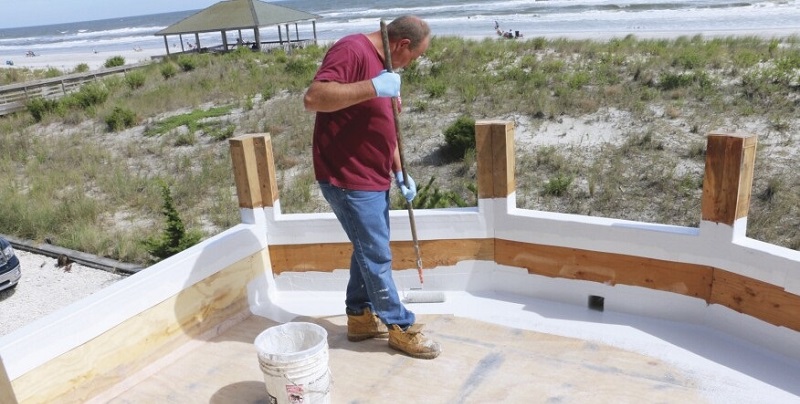
Fiberglass Deck Coating and Waterproofing
The application of coatings and waterproofing solutions is pivotal in safeguarding the integrity of fiberglass roll roof decking against environmental factors. Here are essential steps to follow:
- Surface Preparation: Start with a clean, dry, and smooth surface. Any debris, oils, or pre-existing coatings should be removed to ensure optimal adherence of the new coating.
- Repair Damages: Before coating, inspect for and repair any cracks or signs of wear. This might involve filling cracks with a suitable filler compatible with fiberglass.
- Choose High-Quality Coatings: Opt for high-quality, UV-resistant waterproof coatings designed for use on fiberglass surfaces to prevent premature degradation.
- Application Tools: Use the appropriate tools for coating application, such as rollers, brushes, or sprayers, to achieve an even coat.
- Apply a Primer: If recommended by the coating manufacturer, apply a primer to enhance the durability of the waterproof layer.
- Even Coating Application: Apply the coating evenly across the surface, paying extra attention to seams and edges where water infiltration is more likely.
- Layering: For best protection, apply multiple thin layers rather than a single thick layer, allowing adequate drying time between layers as specified by the product.
- Final Inspection and Touch-ups: After the final layer has dried, inspect the surface for any missed spots or imperfections, applying touch-ups as necessary.
Fiberglass Roof Deck Maintenance
Maintaining fiberglass roof decks not only ensures their longevity but also preserves their visual appeal. Follow these tips to maintain your deck in top condition:
- Regular Cleaning: Wash the surface regularly with mild soap and water to remove dirt and grime, preventing buildup and staining.
- Avoid Abrasive Cleaners: Use gentle cleaning agents. Harsh chemicals can damage the fiberglass finish.
- Inspect Seals and Joints: Periodically check seals and joints for integrity, resealing any gaps with a suitable sealant to prevent water intrusion.
- Check for Damage: Inspect the surface for cracks, chips, or other signs of damage. Address repairs promptly to avoid further deterioration.
- UV Protection: Although fiberglass is generally UV resistant, applying a UV-protection solution every few years can help maintain the color and surface integrity.
- Remove Debris: Keep the surface free from leaves, twigs, and other debris that can trap moisture and lead to water damage or mold growth.
- Clear Drains and Gutters: Ensure that drainage systems are clear to prevent water pooling on the deck surface.
- Furniture and Accessories: Use protective pads under furniture legs to prevent scratches. Regularly move items to avoid uneven fading or wear.
- Professional Inspection: Consider having a professional inspection every few years to assess the deck’s condition and identify potential issues before they become serious problems.
Adhering to these guidelines will extend the lifespan of fiberglass decks and roofs, ensuring they remain functional and visually appealing for years to come. Proper installation, coupled with diligent maintenance, is the key to maximizing your investment in fiberglass deck and roofing systems.
Design and Customization of Fiberglass Decks and Roofs
Design and customization are central to the appeal and functionality of fiberglass decks and roofs. These aspects afford homeowners and designers the flexibility to create spaces that are not just practical but also aesthetically pleasing. Below we explore the range of design options available, focusing on color and texture choices for decks, and creative uses of fiberglass panels in roofs.
Fiberglass Deck Colors
When it comes to fiberglass decks, the array of color and texture options is vast, allowing for significant customization to suit various home styles. Here are six noteworthy points on how to select the best color for your fiberglass decks:
- Match or Complement Your Home’s Exterior: Choose colors that either match or complement your home’s existing color scheme. Neutral colors like beige, gray, or cream can easily blend with most exteriors.
- Consider the Climate: Lighter colors reflect sunlight and can keep the deck cooler in sunny climates, while darker colors can be beneficial in cooler areas by absorbing heat.
- Texture and Slip Resistance: Beyond color, consider the texture of the coating, which can range from smooth to highly textured. Textured surfaces offer better slip resistance, an essential safety feature.
- UV Resistance: Opt for UV-resistant colors that will maintain their hue and not fade quickly over time, ensuring your deck remains vibrant and inviting.
- Personal Preference and Style: From bold and bright colors to soft and serene hues, select a color that reflects your personal style and creates the desired mood for your outdoor space.
- Visual Effects: Lighter colors can make a small deck appear larger, while darker colors lend a cozy, intimate feel. The choice of color can significantly affect the perception of space.
Tips for Hiring Experts in Cutting the Deck and Fiberglassing
Creative Uses of Fiberglass Roof Panels
Incorporating fiberglass roof panels into a building’s design can transcend traditional aesthetics and functionality. Here are eight creative ideas:
- Skylights and Natural Lighting: Use translucent fiberglass panels to create skylights or incorporate them into sections of the roof for enhanced natural lighting. This approach, similar to a translucent fiberglass fly rod, offers the perfect blend of strength, transparency, and durability, providing both illumination and resilience in a sleek and modern way.
- Colored Panels: Employ colored fiberglass panels as design features to inject a pop of color into roofs, offering both beauty and function. Similar to the rich hue of a tobacco color fiberglass rod, these panels can create a distinctive and visually appealing look, while maintaining the durability and weather-resistant qualities of fiberglass. This approach enhances the overall aesthetic of a building while ensuring long-lasting performance.
- Integrated Solar Panels: For energy-savvy designs, some fiberglass panels can integrate with solar panels, subtly blending eco-friendliness with modern aesthetics.
- Green Roofs: Support green roofs by using fiberglass panels as a base for vegetation, combining ecological benefits with visual appeal.
- Patio Overlays: Use fiberglass panels as roofing for patios or pergolas, providing shelter while maintaining a light, airy environment. By incorporating fiberglass panels for pergola, you can enjoy the perfect balance of protection from the elements and a spacious, open feel. These panels offer durability, UV resistance, and a modern aesthetic that enhances the outdoor living experience while allowing natural light to filter through.
- Decorative Overhangs: Fashion decorative overhangs or soffits from fiberglass panels to add character and depth to a building’s façade.
- Insulated Panels: Opt for insulated fiberglass roof panels to enhance energy efficiency without compromising on style.
- Varying Transparencies: Play with different levels of panel transparency to control the amount of light entering an area, creating dynamic lighting effects.
Design and customization options for fiberglass decks and roofs allow for infinite creativity, enabling the creation of spaces that resonate with individual tastes while providing durable, practical solutions. Whether you’re selecting the perfect color for your deck or integrating innovative fiberglass panels into your roof, the possibilities are as limitless as your imagination.
Choosing the Right Products and Contractors for Fiberglass Decks and Roofs
The long-term success of fiberglass decks and roofs hinges on the quality of the materials and expertise of the contractors involved in the installation. Making informed decisions in these areas is critical. Below we outline key considerations when selecting products and professional installers.
Selecting Quality Fiberglass Materials
Fiberglass, which is known for its strength and weather resistance, is the material of choice for many fiber decking types, such as fiberglass composite decking, making it an excellent choice for outdoor structures. However, the quality of fiberglass can vary significantly, and it’s essential to know what to look for to ensure you’re getting the best materials for your project. Here are eight important criteria to guide your selection:
- Resin Composition: Ensure the fiberglass material uses a high-grade resin, which provides the foundation for its strength and durability.
- UV Stability: Choose materials that are UV stabilized to prevent degradation from sun exposure, preserving the appearance and integrity of the decks and roofs.
- Weight and Density: Evaluate the weight and density of the fiberglass, as this can affect both the handling during installation and the performance over time.
- Surface Finish: Opt for a high-quality finish that is not only visually appealing but also resistant to staining and easy to clean.
- Fire Resistance Rating: Make sure the fiberglass materials meet necessary fire resistance codes and ratings for your specific application and location.
- Warranty: Look for products that come with a solid manufacturer warranty, which indicates confidence in the material’s longevity.
- Reinforcement Options: Assess the availability of reinforcing options, such as woven roving or chopped strand mat, which can increase strength and impact resistance.
- Corrosion Resistance: Verify the material’s resistance to corrosive substances if the deck or roof will be exposed to chemicals or saltwater.
How to Choose the Right Contractor for Installation
Hiring a contractor with the right skill set is as important as selecting quality materials. To ensure proper installation and optimal performance of your fiberglass decks and roofs, consider the following nine points when choosing a contractor:
- Experience: Choose a contractor with proven experience in installing fiberglass decks and roofs. Request to see a portfolio of their past projects.
- Licenses and Certifications: Verify that the contractor has all necessary licenses and certifications to perform the work in your area.
- Insurance and Bonds: Ensure the contractor is insured and bonded to protect against any property damage or accidents during the project.
- References and Reviews: Ask for references from previous clients and check online reviews to assess the contractor’s reputation.
- Workmanship Warranty: Look for contractors who provide a warranty on their work to guarantee the quality of the installation.
- Quotations and Contracts: Request detailed quotations and read contracts thoroughly before signing to understand what is included in the scope of work.
- Communication Skills: A contractor should be easy to communicate with, responsive to your questions, and clear about the project timeline.
- Professional Associations: Contractors affiliated with professional associations often have access to the latest industry standards and best practices.
- Clean Worksite Policy: Ask about their cleanup process and ensure they have a policy to maintain a clean and safe worksite throughout the project.
By rigorously assessing potential products and contractors, you lay the foundation for a successful installation of fiberglass decks and roofs that will provide beauty, functionality, and durability for years to come.
How to Choose a Suitable Fiberglass Decks and Roofs Manufacturer
When selecting a manufacturer for fiberglass decks and roofs, it’s essential to evaluate several key factors:
- Product Quality: Choose a manufacturer with a proven track record of producing durable, weatherproof, and high-performance fiberglass products.
- Customization Capabilities: Ensure they can tailor solutions to your project’s specific requirements, including dimensions, finishes, and unique designs.
- Innovation and Technology: Look for manufacturers who emphasize R&D and use advanced technology to improve product longevity, corrosion resistance, and sustainability.
- Experience and Reputation: A reliable manufacturer will have years of industry experience and positive feedback from customers, demonstrating trustworthiness and expertise.
- Customer Support: A competent technical team and accessible support ensure smooth communication and efficient problem-solving during your project.
The Advantages of GangLong Fiberglass as a Manufacturer
GangLong Fiberglass is an exceptional choice for fiberglass decks and roofs due to its commitment to quality and innovation. Their expertise includes the design, production, and installation of high-performance fiberglass products like cable trays and grids. GangLong’s products offer unmatched mechanical strength, combining the rigidity of metal with the flexibility and durability of fiberglass.
Key advantages include:
- Corrosion Resistance: Products withstand harsh environments, ensuring long-lasting performance.
- Custom Solutions: GangLong excels in delivering tailored designs to meet specific project needs.
- Strong R&D: Continuous development of new technologies enhances product quality and sustainability.
- Experienced Team: A skilled technical team provides professional support and guidance throughout the process.
- Global Trust: GangLong’s pragmatic work style and consistent product excellence have earned the trust of domestic and international customers.
To discuss your project needs, contact GangLong via email at [email protected].
Add rustic charm with fiberglass ceiling beams in any room
How to Choose the Right Fiberglass Decks and Roofs: Key Considerations Before Buying
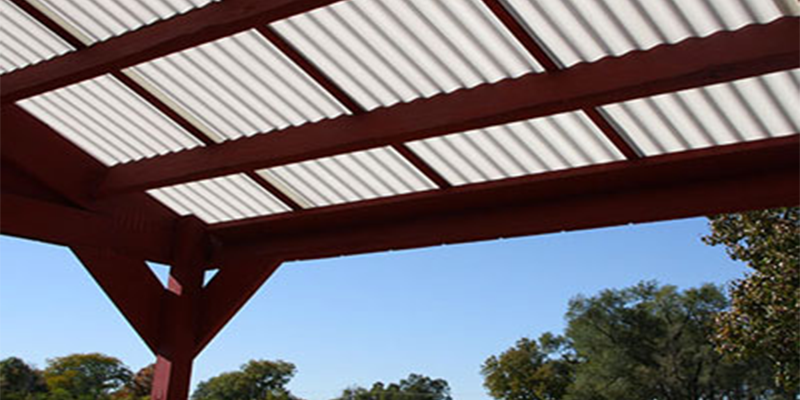
Selecting the right fiberglass decks and roofs involves careful evaluation to ensure durability, functionality, and value. Here’s what to pay attention to before making a purchase:
Material Quality
Ensure the fiberglass is reinforced with high-quality resins for maximum strength, water resistance, and UV stability. High-quality materials guarantee longevity and minimal maintenance.
Purpose and Design
Determine whether the product meets your functional needs, such as load-bearing capacity, slip resistance, and aesthetic preferences. Customized designs may be necessary for unique applications.
Durability and Resistance
Look for products with proven resistance to corrosion, extreme temperatures, and wear caused by weather conditions, particularly for outdoor use.
Manufacturer Reputation
Choose a trusted manufacturer with a track record of delivering reliable, high-performance fiberglass solutions.
Installation Support
Consider whether the supplier offers professional installation services or guidance to ensure optimal performance and safety.
Warranty and Maintenance
Check the warranty terms and maintenance requirements to understand the long-term costs and support provided.
By paying attention to these factors, you can ensure that your fiberglass decks and roofs are a durable and practical investment for your project.
How Manufacturers Make Fiberglass Decks and Roofs: Process, Steps, and Key Considerations
Manufacturing fiberglass decks and roofs involves several precise steps to ensure durability, water resistance, and structural integrity. Here is an overview of the process:
- Design and Molding
- The process begins with designing the deck or roof, taking into account dimensions, load requirements, and aesthetic preferences.
- A mold is prepared based on the design specifications to shape the fiberglass structure.
- Application of Gel Coat
- A gel coat is applied to the mold to create a smooth, waterproof, and UV-resistant surface.
- This layer also enhances the final appearance of the fiberglass product.
- Layering Fiberglass Reinforcement
- Fiberglass fabric or mat is carefully placed over the mold. Multiple layers may be used for added strength.
- Resins, typically polyester or epoxy, are applied to bond the layers and create a rigid structure.
- Curing Process
- The fiberglass and resin composite is allowed to cure, either at room temperature or in a controlled environment for faster hardening.
- Proper curing ensures the product is strong and durable.
- Trimming and Finishing
- Excess material is trimmed, and the product is sanded for a clean, smooth finish.
- Additional coatings, such as anti-slip finishes or decorative textures, may be applied.
- Quality Inspection
- The finished product undergoes rigorous quality checks to ensure it meets performance and safety standards.
Key Considerations in the Manufacturing Process
- Material Quality: Use high-quality fiberglass and resins to ensure strength and weather resistance.
- Environmental Controls: Maintain proper temperature and humidity during curing to avoid defects.
- Safety: Follow safety protocols for handling fiberglass and resins, as the materials can emit fumes or create sharp edges.
- Precision: Adhere to design specifications and ensure even application of resin and reinforcement layers for uniform strength.
By following these steps and best practices, manufacturers produce fiberglass decks and roofs that are durable, waterproof, and long-lasting.
Color Options for Fiberglass Decks and Roofs: Variations and Differences
Fiberglass decks and roofs come in a wide range of colors, allowing for customization to match aesthetics and functional needs. Common color options include:
- Neutral Shades: White, gray, beige, and tan are popular for creating a clean, modern look. These colors are versatile and blend well with most architectural styles.
- Bold Colors: Options like blue, green, or red are available for unique or vibrant designs.
- Earth Tones: Browns, greens, and ochre hues mimic natural materials and are ideal for outdoor settings with a rustic feel.
- Custom Colors: Some manufacturers offer custom color-matching to suit specific design preferences.
Differences Between Colors
- Heat Absorption
- Light Colors: Reflect more sunlight, keeping surfaces cooler and reducing heat buildup. Ideal for hot climates or areas exposed to intense sunlight.
- Dark Colors: Absorb more heat, which can lead to warmer surfaces. Suitable for cooler climates but may require additional thermal considerations.
- UV Resistance
- Some colors, especially lighter ones, are more resistant to fading caused by UV exposure. Darker colors may require UV-stabilized coatings to maintain their vibrancy over time.
- Maintenance
- Light colors are more prone to showing dirt and stains, requiring regular cleaning to maintain appearance. Dark colors may hide dirt better but can show scratches more prominently.
- Aesthetic Impact
- Color choices influence the visual harmony of a deck or roof with the surrounding environment. Neutral tones are timeless, while bold colors make a statement.
Choosing the Right Color
When selecting a color for fiberglass decks and roofs, consider climate, maintenance preferences, and the overall design aesthetic. Consulting with a manufacturer offering color customization can help ensure the chosen shade aligns with both functional and aesthetic goals.
FAQs about Fiberglass Decks and Roofs
Fiberglass roof decks are renowned for their longevity and can last anywhere from 25 to 30 years with proper installation and maintenance. The lifespan is due to the material’s durability, resistance to water, and ability to withstand harsh weather conditions, including UV radiation and thermal expansion. To extend the life of a fiberglass roof deck, it’s crucial to follow the manufacturer’s guidelines for care and to conduct regular inspections to address any minor issues before they become more significant problems. Maintenance might involve cleaning the deck to prevent the buildup of debris and ensuring that any sealants or coatings remain intact. Also, professional inspections can help to identify and rectify any potential weak spots or damages that could affect the deck’s integrity over time
The cost of a fiberglass deck varies widely based on factors such as size, complexity of the installation, the grade of materials used, and regional labor costs. On average, you can expect to pay anywhere between $15 to $35 per square foot for the materials alone, while total costs including professional installation can range from $30 to $75 per square foot. For a more accurate estimate, it’s best to obtain quotes from several contractors who will assess the project’s specific requirements. Keep in mind that while the initial investment may be higher compared to traditional materials like wood, the lower maintenance requirements and longer lifespan can make fiberglass decks a more cost-effective solution over time.
Fiberglass decks are an excellent option for many homeowners due to their numerous benefits. They are extremely strong, durable, and resistant to rot, rust, and pest infestation, making them superior to traditional wood or metal in many aspects. Additionally, fiberglass decks do not require frequent staining, sealing, or painting, thus reducing maintenance efforts and costs. Their water impermeability makes them ideal for wet climates or settings near pools and coastlines. Fiberglass decks also provide a sleek, modern finish with a variety of textures and colors that can fit any design aesthetic. However, their upfront cost might be higher, and they do require professional installation to ensure the best performance.
Yes, fiberglass can be used for roofs and is an excellent roofing material due to its durability and waterproof nature. Often found in the form of corrugated panels or a laminate applied over a plywood substrate, fiberglass roofs offer long-term protection with minimal maintenance. They are lightweight, which makes for easier handling and installation while allowing for less structural strain on buildings. Fiberglass roofing systems are designed to be impervious to water and resist varied weather conditions, including high winds and hail, which are common causes of roof damage. They also demonstrate good fire resistance and can be treated to be more energy-efficient, reflecting sunlight and helping to reduce cooling costs. When properly installed and maintained, a fiberglass roof can last for several decades, providing a cost-effective and reliable roofing solution.
For fiberglass decks and roofs, fiberglass-reinforced panels (FRP) are among the best materials for roof decking. Fiberglass is lightweight, waterproof, and resistant to rot, mold, and UV rays, making it an excellent choice for outdoor applications. It provides a smooth, seamless surface, ensuring durability and easy maintenance. Unlike wood or metal, fiberglass does not warp, rust, or corrode, even under harsh weather conditions. Additionally, fiberglass can be molded into various shapes, making it versatile for unique architectural designs. Properly installed fiberglass decking can last for decades without significant wear. To maximize its effectiveness, the decking should be combined with a high-quality resin coating, which further enhances water resistance and prevents cracking.
The cost of a 20×20 fiberglass composite deck can vary depending on the quality of materials and labor involved. On average, it ranges from $10,000 to $15,000, which includes the cost of materials, installation, and any additional coatings or finishing. Fiberglass decking is typically more expensive upfront than traditional wood or composite materials, but it offers long-term savings due to its durability and low maintenance. The price includes the fiberglass panels, resin coating, and any structural reinforcements needed to ensure stability. Additional costs may arise if custom designs, colors, or anti-slip finishes are requested. While the initial investment may be higher, homeowners benefit from a deck that resists wear, is waterproof, and requires minimal upkeep, making fiberglass an economical choice over its lifespan.
For fiberglass roofs, it is possible to overlay new decking over old decking, provided the underlying structure is sound and free of significant damage. Fiberglass is lightweight, which minimizes the load on the existing roof. Before proceeding, inspect the old decking for rot, mold, or structural weaknesses. If the original decking is in good condition, a layer of fiberglass resin and reinforcement can bond the new decking seamlessly, creating a watertight and durable surface. However, adding new decking over old layers may reduce ventilation and increase the risk of trapped moisture. Proper preparation, including cleaning and applying bonding agents, ensures optimal adhesion. Consult with a professional to assess the old decking’s condition and ensure compliance with local building codes for a safe and effective installation.
Fiberglass roof decking is highly durable and does not need frequent replacement. Under normal conditions, fiberglass decking can last 25–50 years with minimal maintenance. Regular inspections every few years can help identify minor cracks, wear, or resin degradation that may require repair rather than full replacement. Factors such as weather exposure, structural movement, and improper installation may affect its lifespan. If the decking is well-maintained with periodic reapplication of protective coatings and cleaned to prevent debris accumulation, it can significantly outlast traditional decking materials. Replacement is generally only necessary if the underlying structure is compromised or the decking is extensively damaged by external forces.
A deck with a roof is commonly referred to as a covered deck or a roof deck. When constructed with fiberglass, these decks are sometimes called fiberglass-covered decks due to their material-specific properties. Fiberglass roofing systems are ideal for covered decks because they provide a seamless, waterproof surface that protects against rain and UV exposure. The roof can be integrated into the design, using fiberglass for both the deck and the roof for a uniform, modern look. These structures are popular for outdoor living spaces, offering protection from the elements while maintaining durability and aesthetic appeal. Fiberglass’s lightweight yet robust nature makes it an excellent choice for this type of application.
Fiberglass is among the longest-lasting deck materials available. Unlike wood, which is prone to rot, or traditional composites, which can degrade under extreme UV exposure, fiberglass is resistant to water, mold, and UV damage. Its seamless and non-porous surface ensures it remains structurally sound for decades, even in harsh climates. Properly installed and maintained fiberglass decks can last 50 years or more, far outlasting traditional materials like wood or vinyl. The longevity is further enhanced by periodic applications of protective coatings that prevent wear and maintain appearance. This durability, combined with low maintenance, makes fiberglass an ideal choice for homeowners seeking a long-term investment in their outdoor living spaces.

As the editor of GangLong Fiberglass, I have years of experience and in-depth research, focusing on cable tray products, fiberglass solutions, and grille systems. I incorporate years of industry insights and practical experience into every content, committed to promoting the progress of the industry. At GangLong Fiberglass, my commitment is reflected in every product, from innovative cable trays to durable fiberglass solutions and sturdy grille systems. As an authoritative voice in the industry, my goal is to provide valuable information to professionals and businesses and promote forward-looking solutions.

